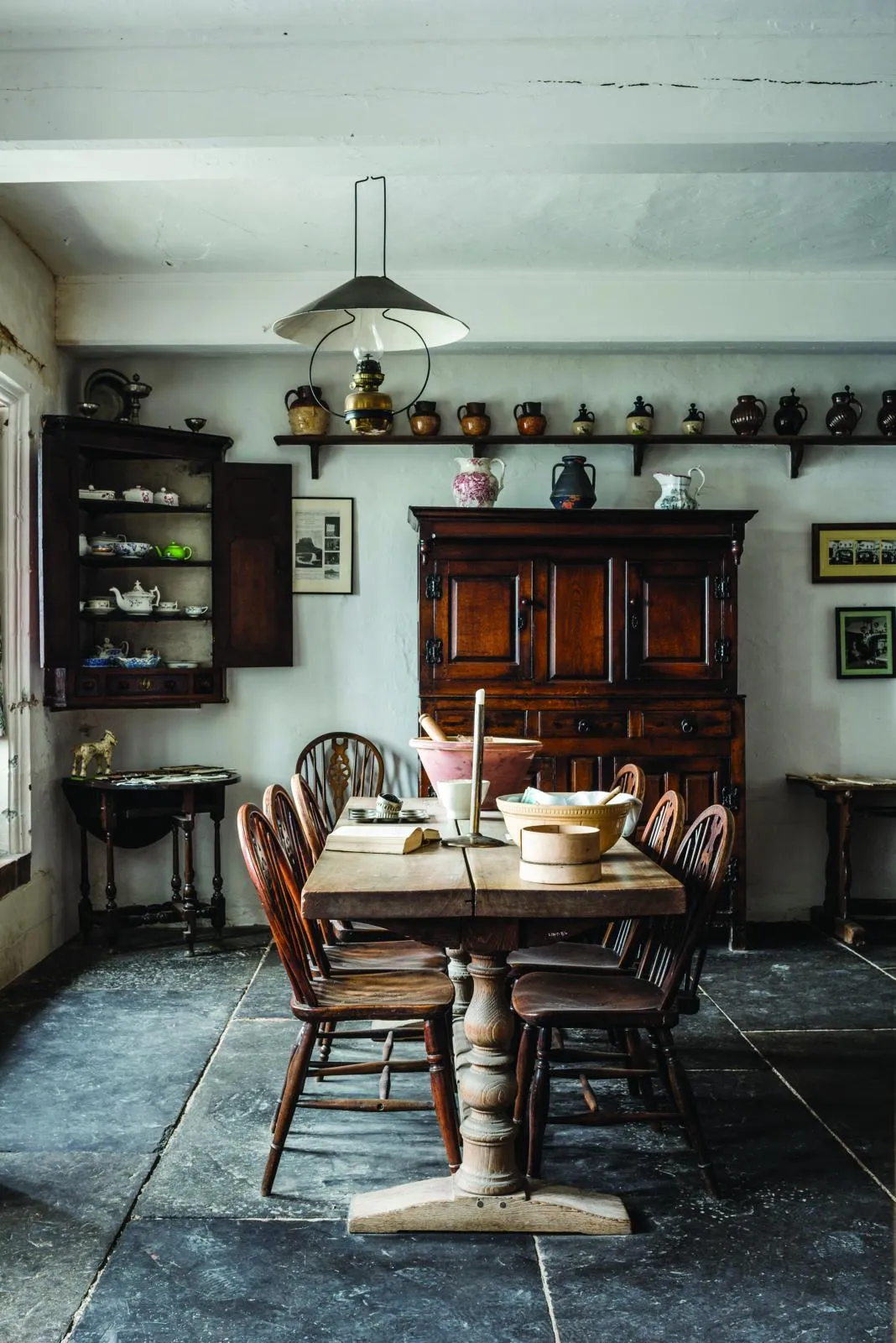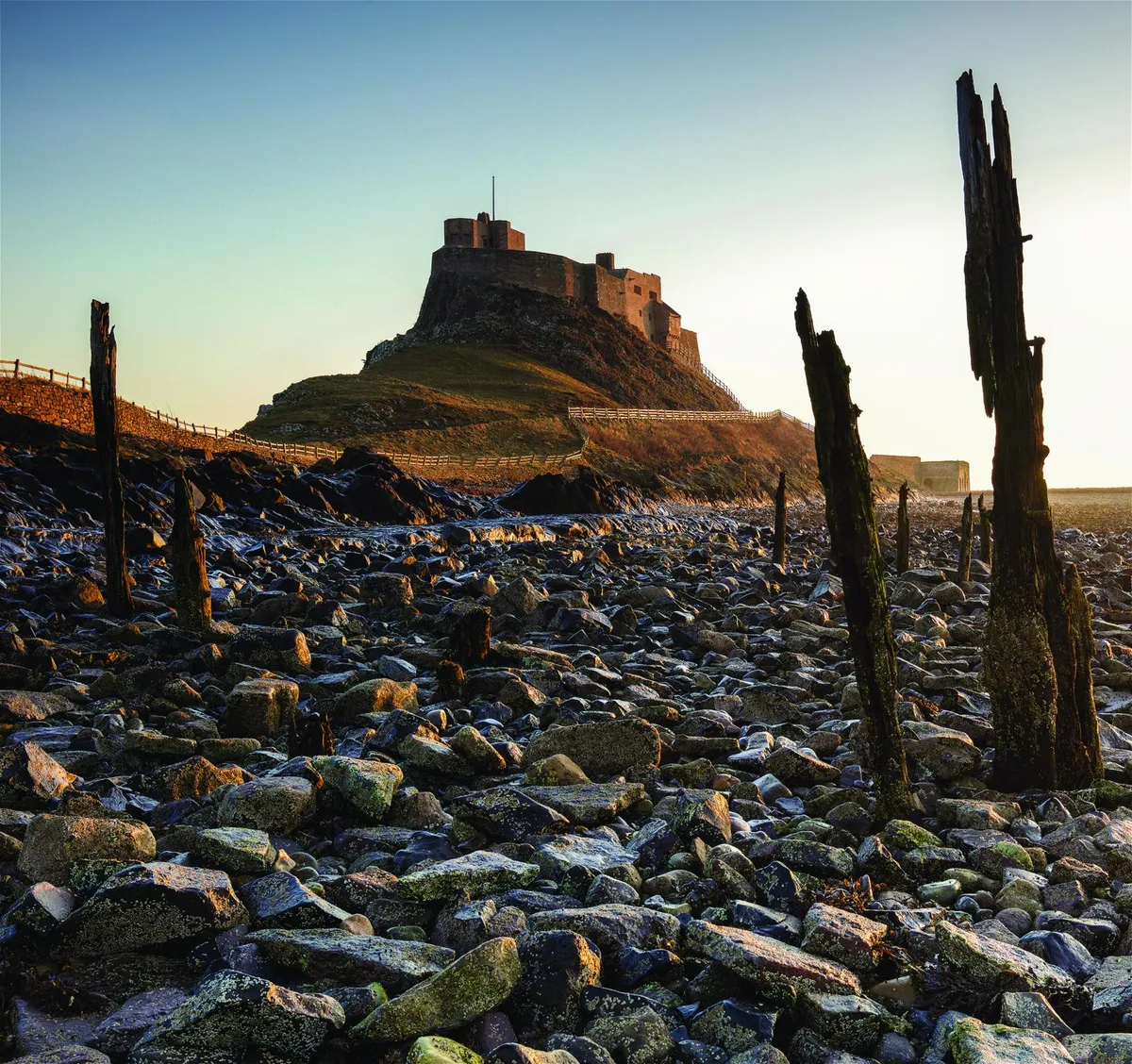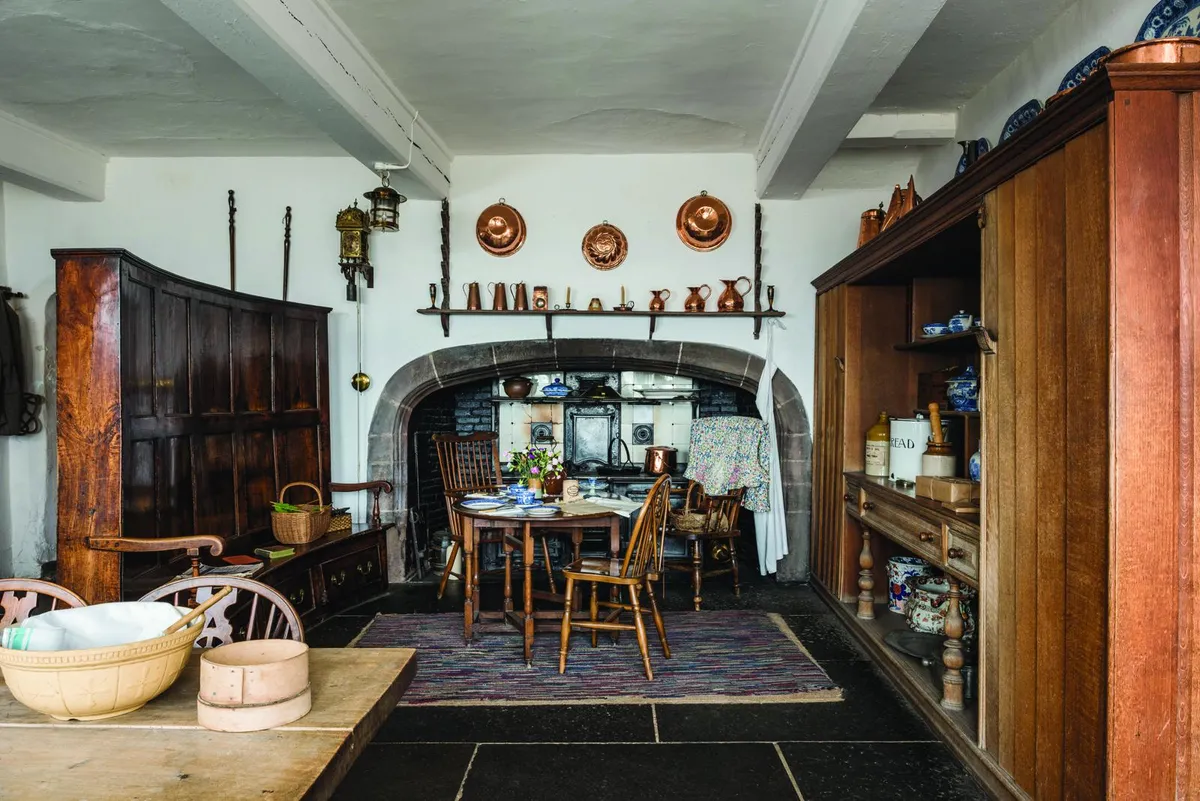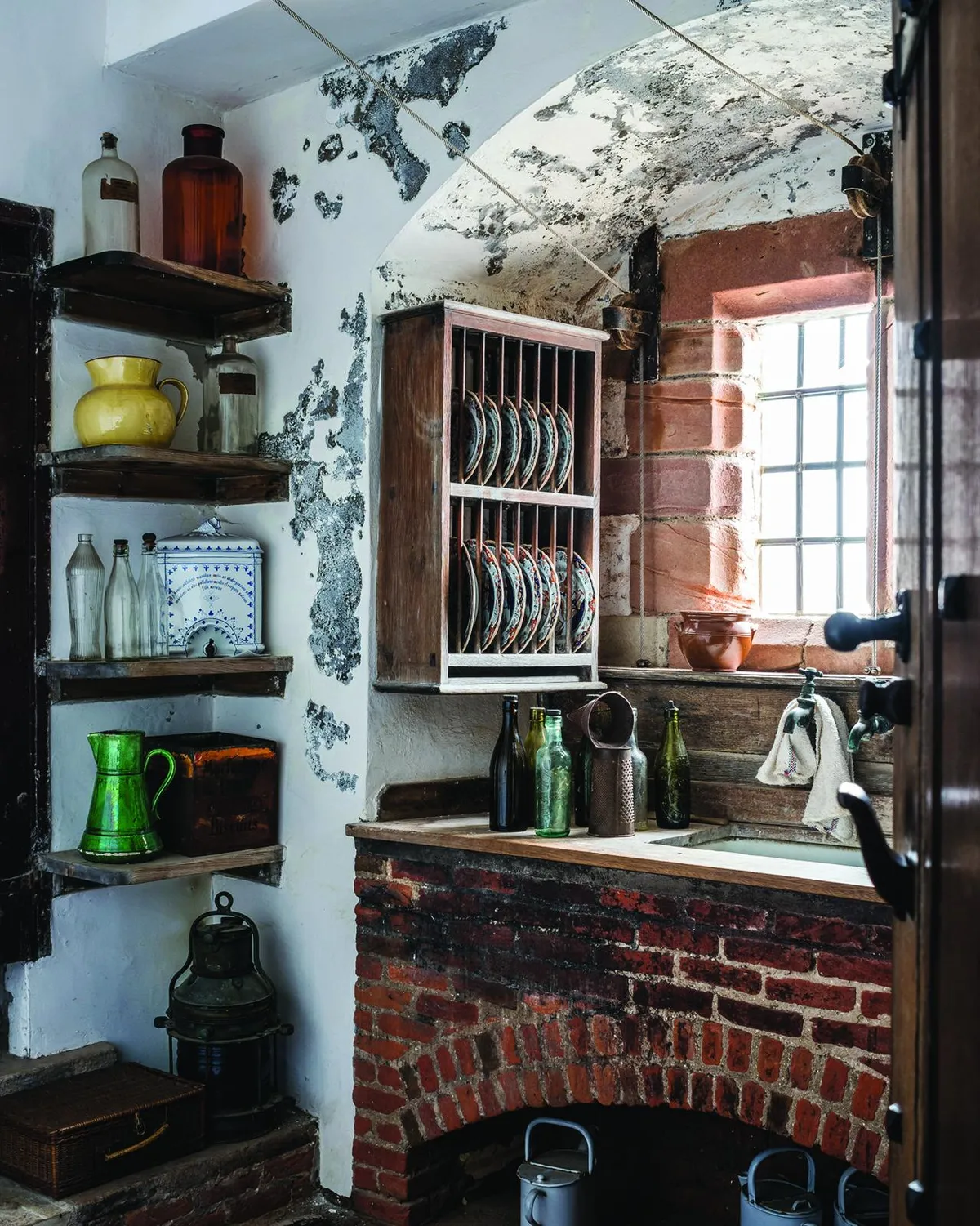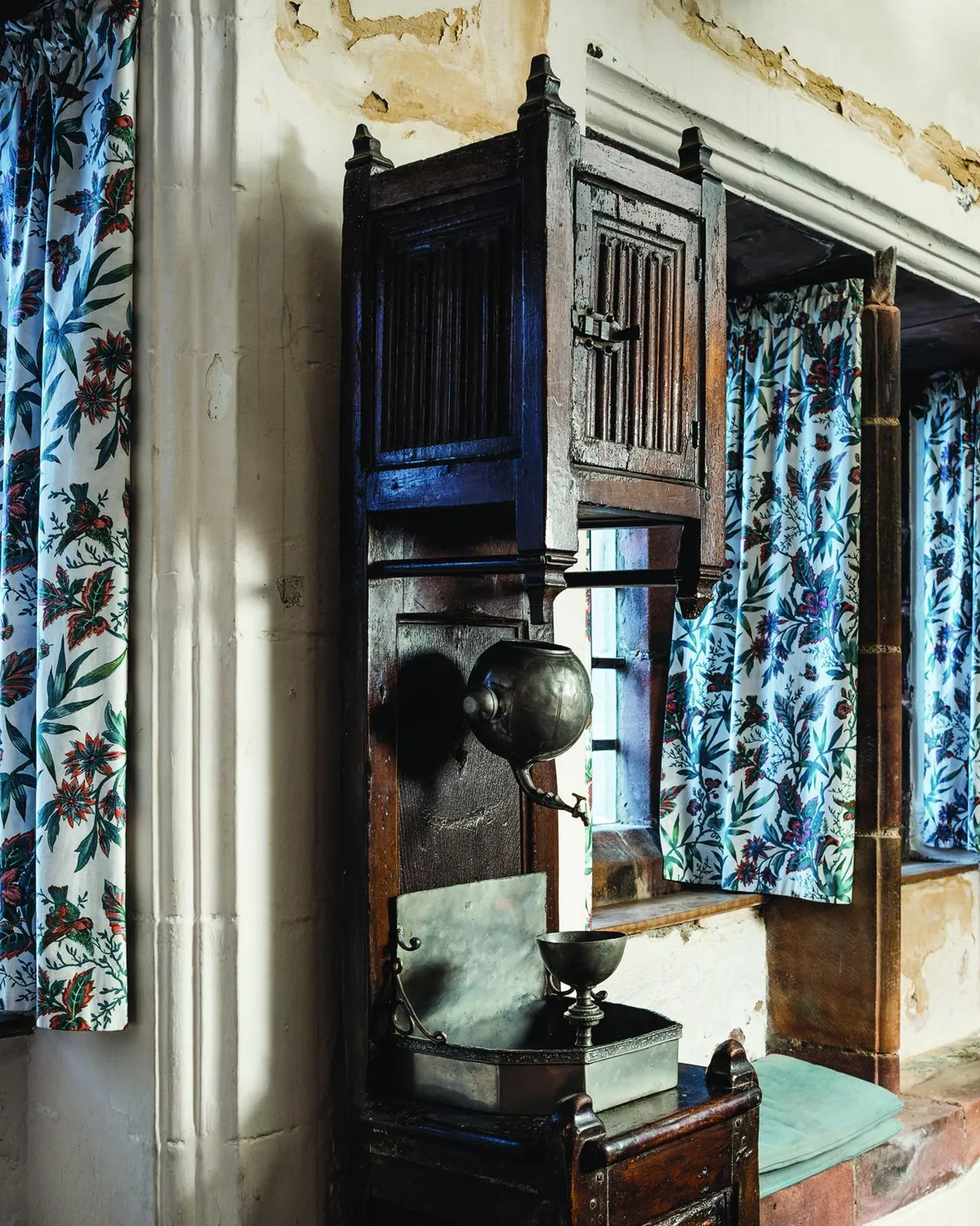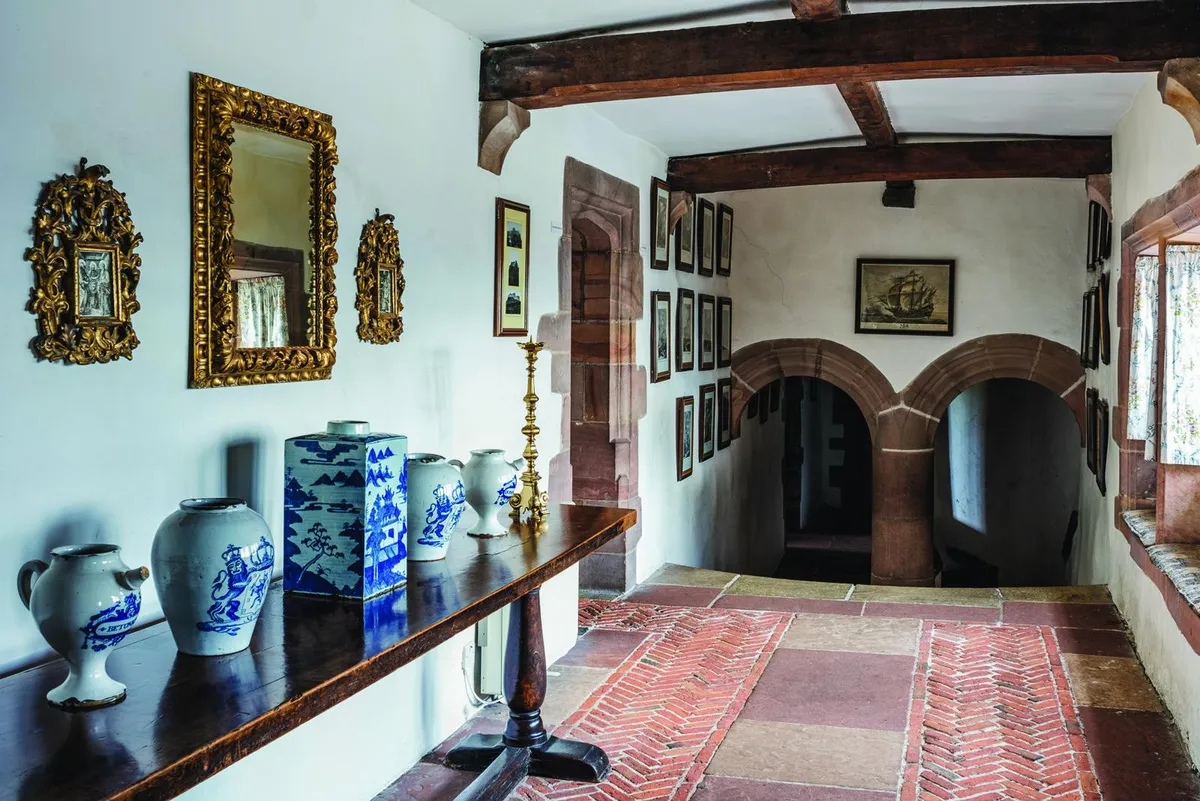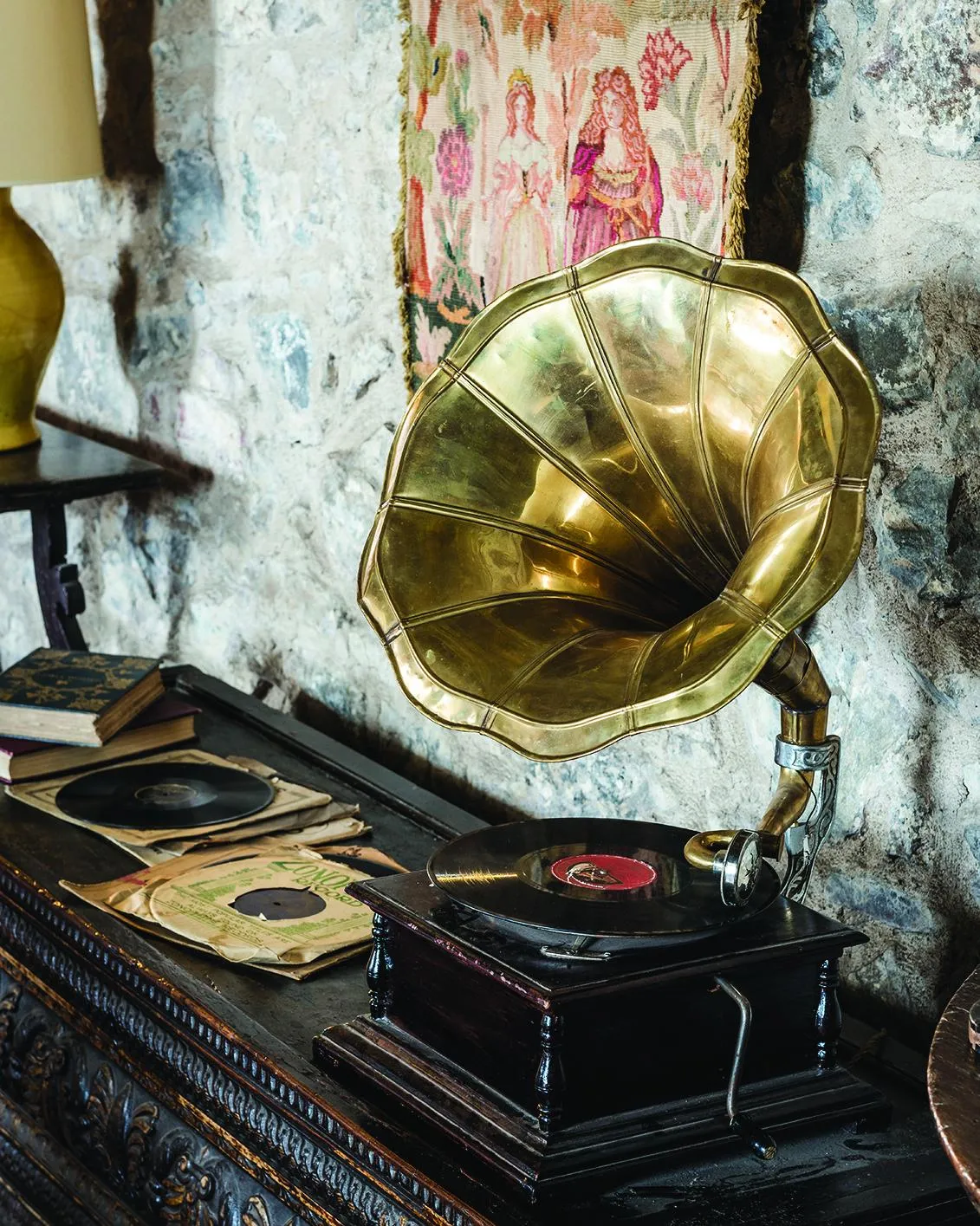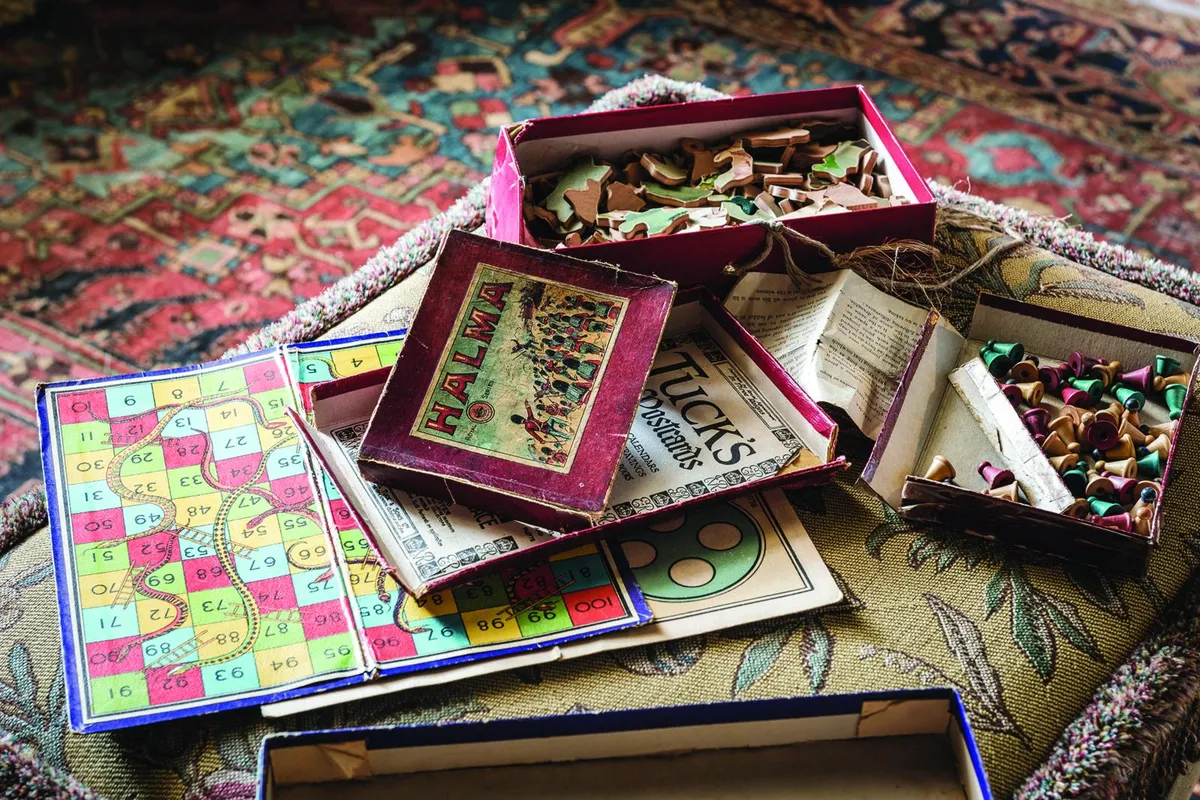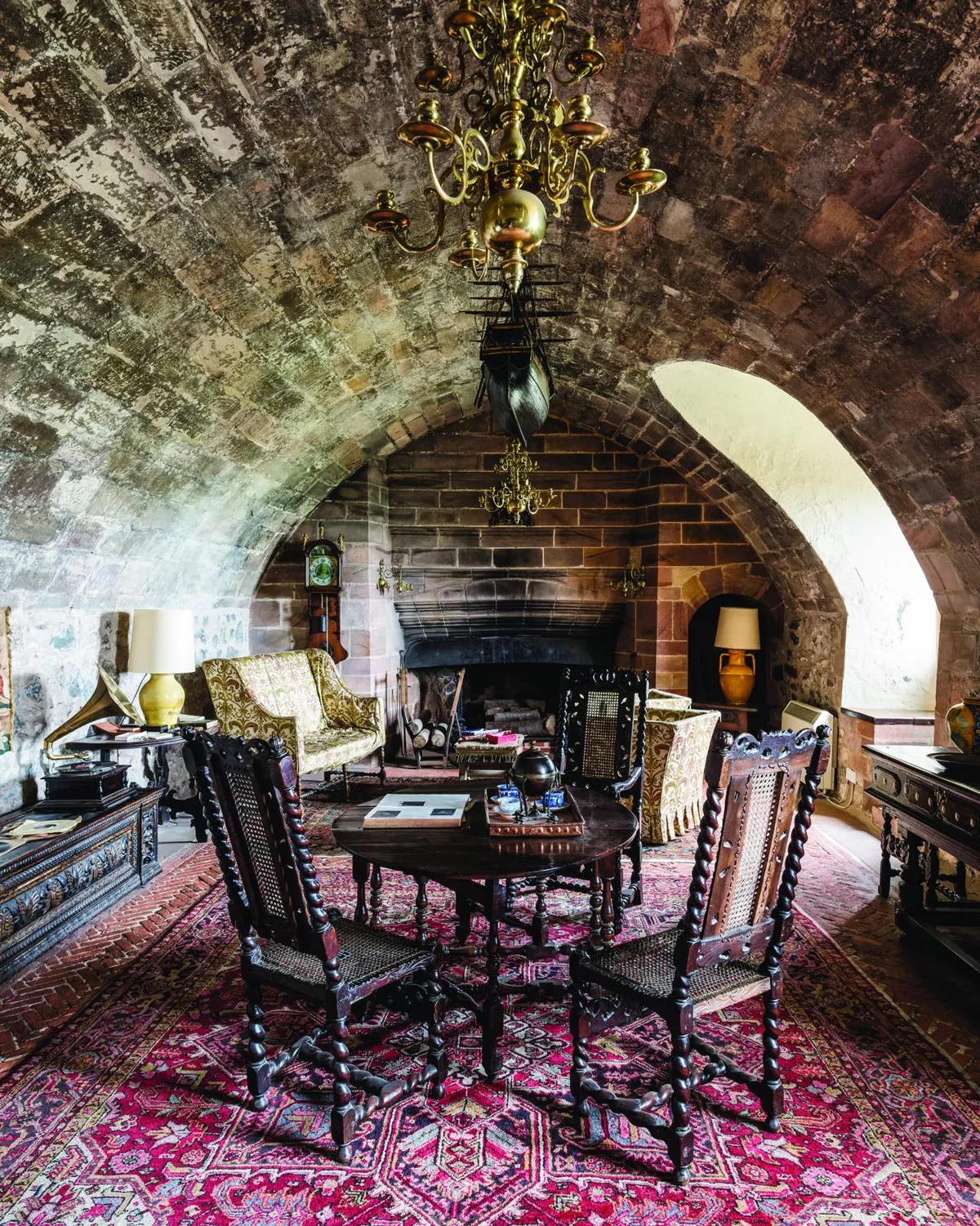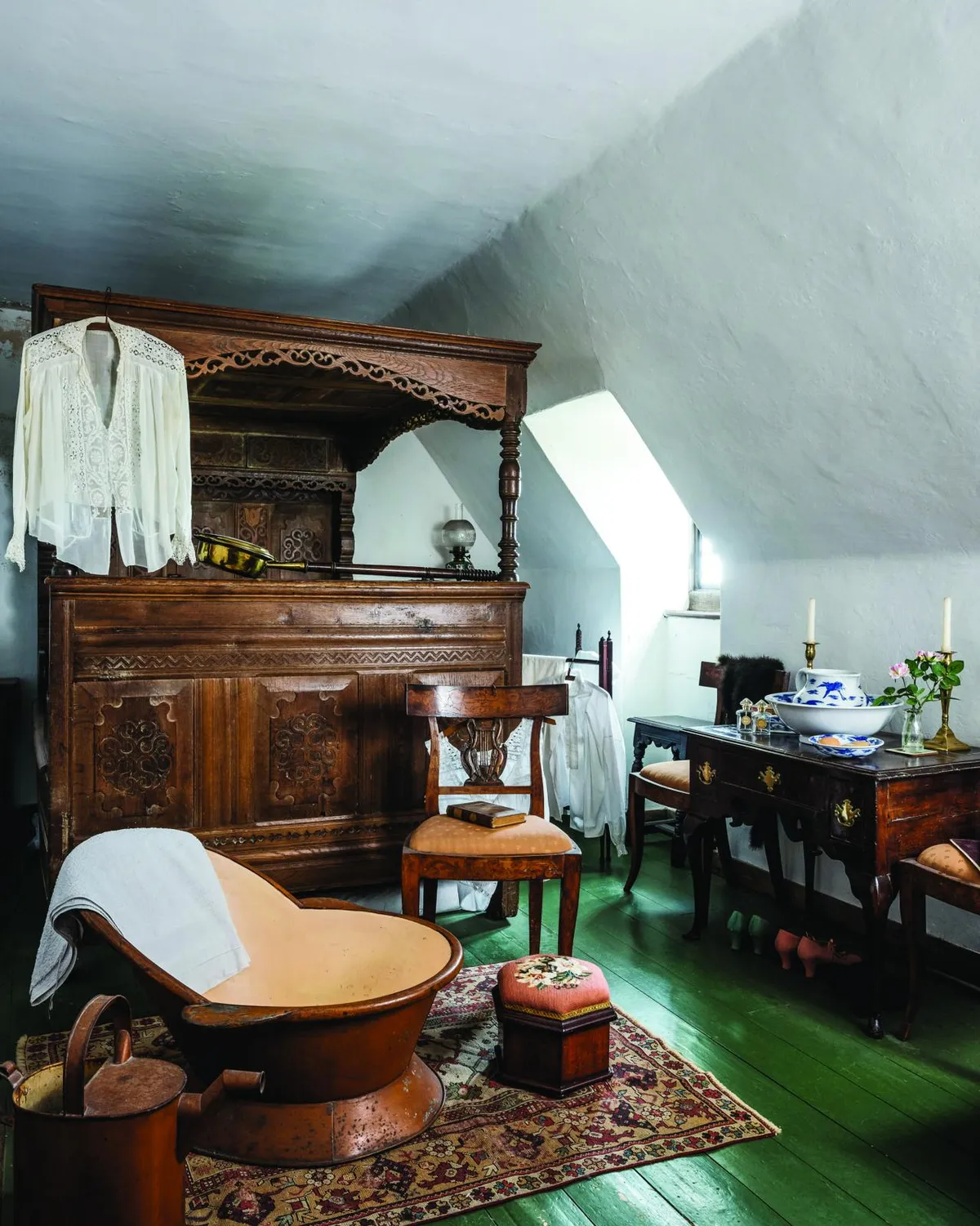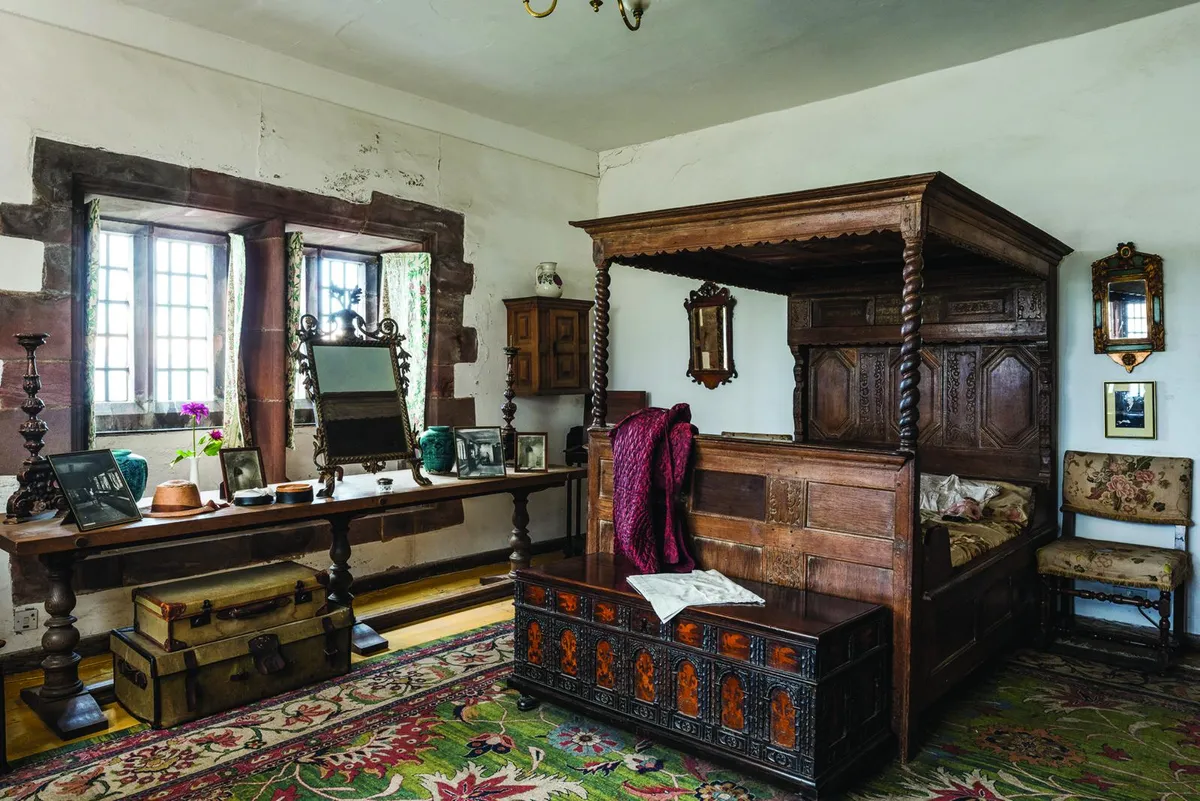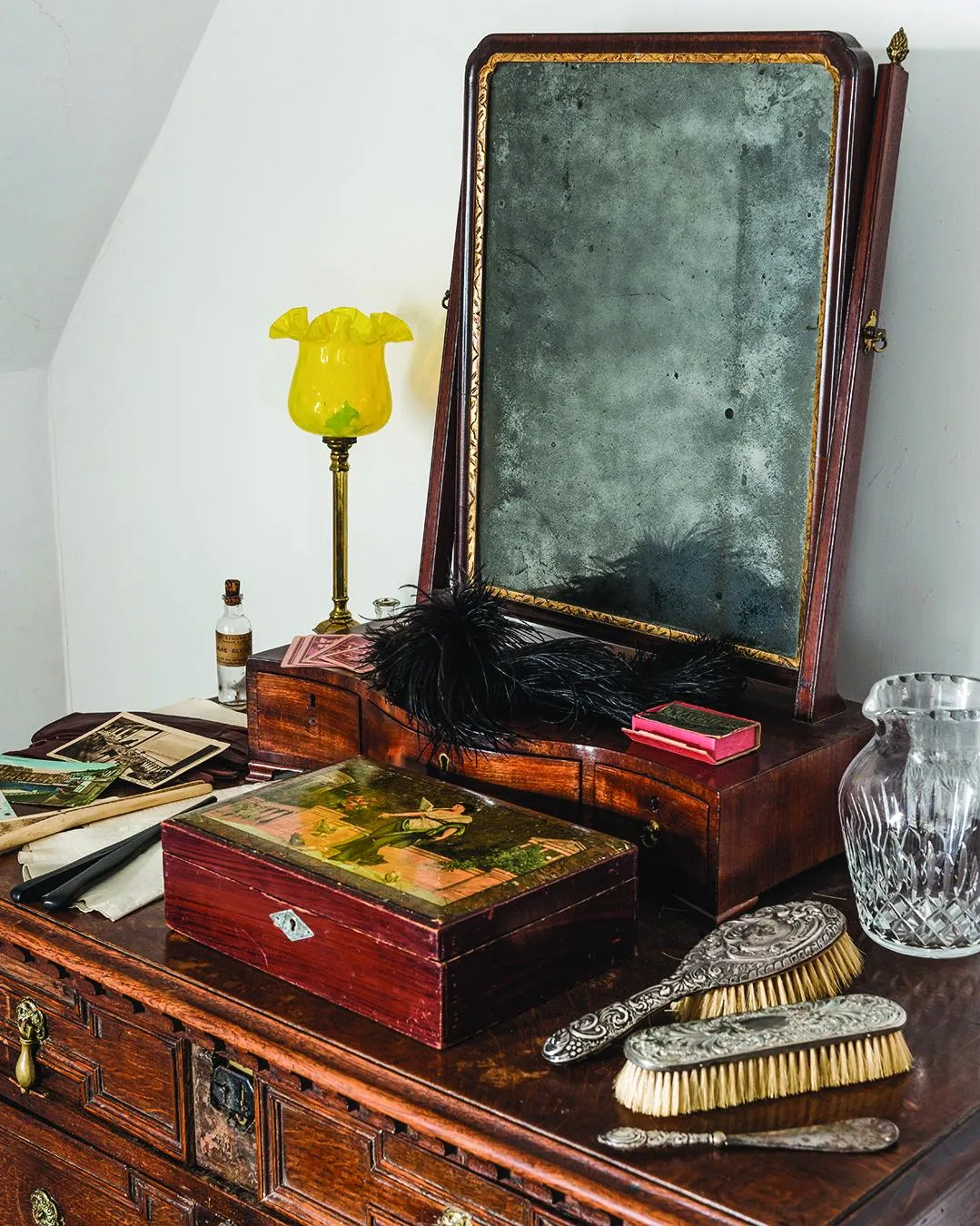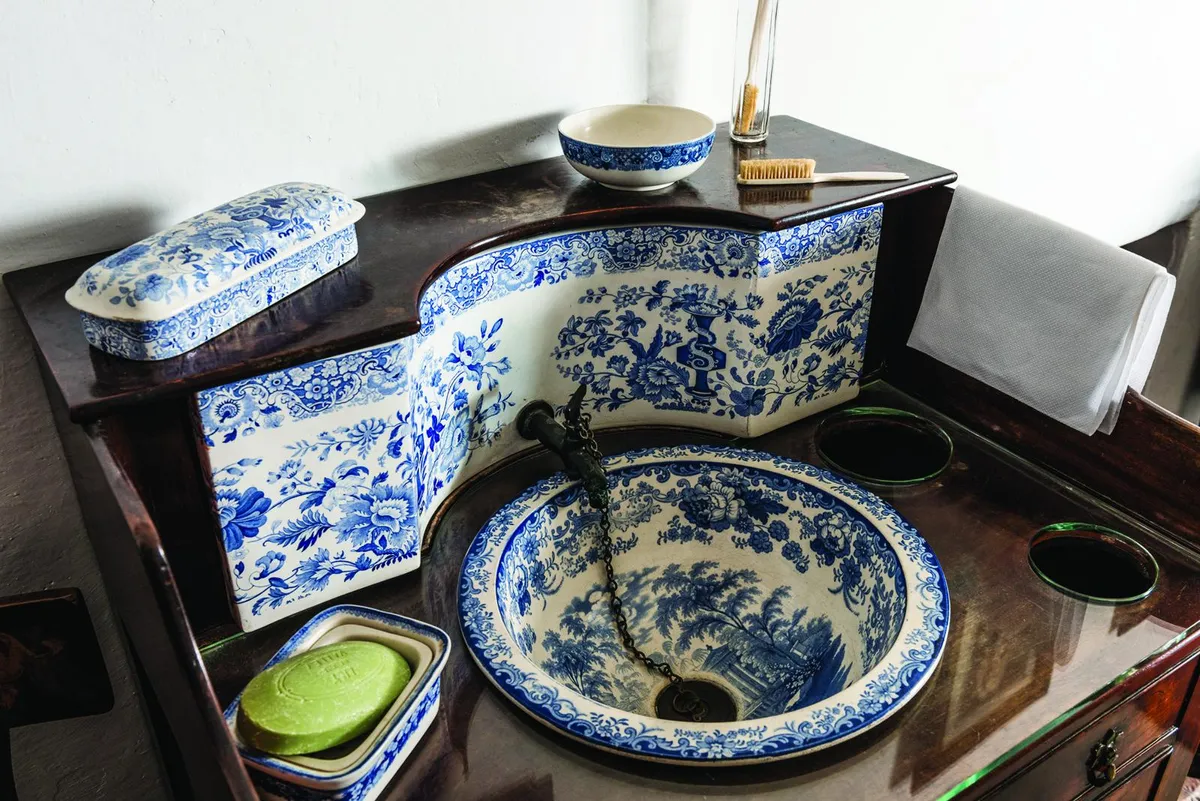Crouched on a craggy hill top, visible from the mainland yet cut off at low tide, Lindisfarne Castle’s dramatic location on Holy Island lies at the heart of its history.
‘The site allows for useful strategic viewing of the eastern and northern horizon, and the fact you can see it but it’s inaccessible at times also has a spiritual connotation,’ says Nick Lewis, Lindisfarne’s Collections and House Officer.
Lindisfarne provided protection against invasion from the Scots, later becoming a Cromwellian stronghold, a haven for Jacobites (for one day), and a sparsely armed garrison until the early 19th century.
Then, after a spell as coastguard lookout, it fell into disrepair, until the crumbling crenellations captured the attention of the owner of Country Life magazine, Edward Hudson, who was travelling north for a holiday in 1901.
‘I think he would have seen it from the train, as many people still do, and the drama of its location was the key to his interest,’ says Nick. Hudson had a strong idea of what he wanted from a country retreat and, having decided to take on the dilapidated ruin, he commissioned his friend Edwin Lutyens to transform the building to suit his needs.
You might also like a 16th-century castle restoration in Scotland
Drawing inspiration from Durham Cathedral, the architect created an entrance hall divided by a columned arcade that seemed to sprout from the rock beneath. ‘The arches aren’t load bearing; they are purely there to add drama when you come in,’ reveals Nick.
Two separate buildings were linked with a long gallery, laid with Lutyens’ trademark herringbone brick floor, and a dining room was fashioned from the old Tudor kitchen.
A gun magazine and other small rooms were knocked together to make a drawing room, which Lutyens named the Ship Room after the model East Indiaman he suspended from the vaulted ceiling.
The two men collaborated on the furnishings, too. ‘Some furniture, such as the dining table and kitchen dresser, were bespoke Lutyens pieces. The dresser was made in 1912 and has never moved since,’ says Nick. Antiques were also used, both men favouring large 17th and 18th-century country farmhouse pieces.
In the kitchen they positioned a high-backed curved settle to create a draft screen. Principal bedrooms were furnished with 18th-century tester beds, one of which contains a gun cabinet in its foot. A long refectory table became a side table in the gallery. ‘I wonder whether they purposely chose robust furniture because of the environment it was going to be in,’ says Nick.
But Lindisfarne was always intended as a holiday retreat, and here and there practicality was abandoned in favour of fun. A colourful wind indicator map, painted by MacDonald Gill, depicts a detailed map of Northumberland during the time of the Armada, with Holy Island and a compass at the centre.
You might also like 6 of the best castles you can stay in
Connected to a weather vane on the roof, the pointer moves according to the wind direction. The workings run under the floorboards and can make an alarming grinding sound when the wind blows.
Nick believes Lutyens’ sense of humour is also evident in the Aumbry (a cupboard used traditionally to store the objects used for the Eucharist) that stands in the entrance hall.
‘The timber part is from a church, but the pewter pieces aren’t. The drip tray is completely alien, and the globe, crudely attached, may be from a gin bar or may even be knocked up from Hudson’s favourite coffee percolator.’
Given his key role in the castle’s reconstruction, it’s surprising to discover how little is known about Edward Hudson. ‘He was an elusive man with few close friends. In photos he’s often wearing a peaked cap and has his head down in shadow,’ says Nick.
For a time, he was besotted with Guilhermina Suggia, a famous Portuguese cellist to whom he was engaged. ‘She turned up and stayed for months on end. I’ve spoken to islanders who remember hearing the sound of her playing across the bay,’ says Nick.
You might also like an 18th-century Italian castle
Lutyens’ children also spent a long holiday at Lindisfarne while their father worked. His daughter Mary later recalled playing a game dubbed French Revolutions with Hudson, whom they nicknamed Old Huddy.
‘There was an adjustable fire screen with two uprights they could loosen, so the screen dropped. They called this their guillotine,’ says Nick.
With no servants’ quarters, Lindisfarne was ill-suited to hosting grand house parties. Even so, Lindisfarne’s guests included J.M. Barrie, who brought his Newfoundland dog (the model for Nana in Peter Pan), Violet Bonham Carter, the conductor Malcolm Sargent, Lytton Strachey and Gertrude Jekyll.
Not everyone was as smitten as Hudson with the castle. The Prince and Princess of Wales came to see, but didn’t stay, and Lytton Strachey said there was too much stone and nowhere comfortable to sit.
Eventually, Hudson grew tired of the castle and sold it, complete with furnishings. To Nick, however, his presence lingers on: his enigmatic life here as fundamental to its fascination as its location.
‘As a historian, the fact it still has so much of its story to tell is beguiling. And the time tide book is in my glove box; it’s a place rooted in its environment.’
